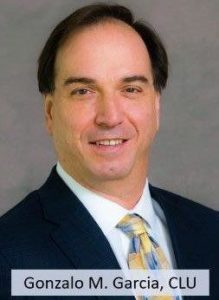Are Your Managed Accounts at Risk?
 As a Partner at AgencyONE in Bethesda, Maryland and one of the Co-Founders of The Insurance Network for Fiduciary Advisors (IN4FA), I have gratefully been serving financial advisors for 40 years by helping them preserve managed accounts, reduce the morbidity, longevity, mortality, and tax risks from their client’s financial plans. Over the years, I have heard a variety of personal stories from clients and advisors alike. I would like to tell you one of those stories now.
As a Partner at AgencyONE in Bethesda, Maryland and one of the Co-Founders of The Insurance Network for Fiduciary Advisors (IN4FA), I have gratefully been serving financial advisors for 40 years by helping them preserve managed accounts, reduce the morbidity, longevity, mortality, and tax risks from their client’s financial plans. Over the years, I have heard a variety of personal stories from clients and advisors alike. I would like to tell you one of those stories now.
Years ago, my wife and I met with our own financial advisor, Joe, for a regularly scheduled review of our financial plan. Joe has been our financial planner for many years and has done a great job for us. Knowing that I am in the insurance business, he only works with us from a financial planning and investment management standpoint. That day he was visibly upset so I asked him what was wrong.
Joe explained that earlier in the day he met with the 3 adult children of a client – Edith – who recently passed away. Edith became ill after her husband, Bill, died. She was in a nursing home with Alzheimer’s for many years and passed away at age 82.
Throughout her illness, Joe was diligent in his efforts to help the family pay for Edith’s health care expenses from her investment account. Joe saw the children at Edith’s funeral, who all seemed very grateful for his help and guidance to Edith and Bill over the years. They asked Joe to attend a meeting with their attorney to go over Edith’s estate.
Bill and Edith did very well for themselves. They built a family business which lives on to this day and Edith still had several million dollars remaining in an IRA left to her by Bill and another million dollars or so in investments, after almost 7 years of care. Joe was very pleased that his financial planning helped to provide over $1,000,000 of cash flow for Edith’s care during her illness.
Joe mentioned during our meeting that the children asked, to his surprise, to have all of Edith’s accounts transferred to another advisor. This “other” advisor was the recipient of the proceeds from a $5,000,000 second-to-die life insurance policy that Edith’s husband purchased many years ago from another advisor. The policy was owned by a trust as part of the couple’s estate plan. During the meeting with the children and their lawyer, Joe was asked WHY long-term care insurance was never recommended to their parents. They believed they “lost” over $1,000,000 in inheritance as a result of this oversight.
I did some quick math in my head and realized that Joe not only lost a client whom he apparently cared for deeply, but also lost:
- $3MM in an IRA;
- $1MM of Non-Qualified Assets;
- $1MM of depleted assets due to Edith’s extended illness; and
- $5MM of insurance proceeds of which he was not even aware.
That was $10MM in AUM and about $100,000 of annual ongoing revenue at his 1% fee.
I know that Joe has an exit plan for his practice; we have discussed this many times in the context of my wife and I being clients, and I realized that Joe had just lost about 1 to 1.5MM dollars in the exit value of his book of business at a 10-15X multiple.
I looked at Joe and said “Joe, you know what I do for a living, right?”
He, of course, said “Yes.”
“And this whole situation came as a surprise to you, right?”, I asked.
“Yes, I thought that I did a great job for them”, he replied.
I added, “I know you don’t want to be surprised like this again because it has a multiplier effect on the value of your book when you get ready to retire.”
I went on to say that Joe’s current business is like a boat with a bunch of holes in the hull. Anyone who buys that boat is going to have to incur a lot of time and expense to fix the hull before they can enjoy it.
Studies have shown that 70% of people over the age of 65 will need some form of care for approximately 2 to 3 years in their later stages of their life. The cost of this care will come at a significant expense and depletion of assets.
Furthermore, as Joe experienced with Edith’s children, 90+% of ALL managed accounts change advisors at the death of the second account holder.
I said, “Joe, we are going to develop a Beneficiary and Asset Retention Strategy for your firm, and I am going to help you do the same with all your clients, just like we did with my own kids”.
For the last several years, Joe and I have collaborated to ensure that the situation with Edith and her children never happens again, and to further help advisors preserve managed accounts.
Since then, my business partners and I created the Insurance Network for Fiduciary Advisors (IN4FA), a national network of risk management professionals who are dedicated to helping other fiduciaries:
- Serve their clients’ best interests;
- Preserve managed accounts by preventing the transfer of assets upon the death of the second account holder; and
- Improve their businesses through holistic and collaborative planning.
If you are not talking to your clients about the financial risks of morbidity, longevity, mortality, and tax risks associated with the transfer of assets, your client’s financial plans are in danger, along with your own book of business.
To discuss your practice needs, please call or email. I also invite you to visit our websites: IN4FA or AgencyONE.




